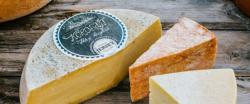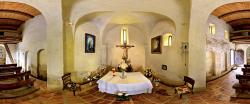Search
Kizárt szavak
Tiltott szavak
- cialis
- viagra
- php
- sql
- html
- https
- http
- chr
- script
- sex
- porn
- sexmassage
Alternatív kifejezések
- =
1. Natural attractions in the area
Last modification: 2025. October. 10. 13:56
Találati relevancia adatok
Tárolt adatok:

Nature is capable of unrepeatable wonders that can amaze you day after day. Here are some of the places worth visiting in the area:
- Balaton-Uplands National Park
- Lookout towers, hiking trails in the Keszthely Hills
- Kis-Balaton Visitor Centre
- Kányavár Island - Kis-Balaton
- Csodabogyós (Butcher’s-broom) Cave - Balatonederics
- Kotsy Water Mill - Zalaszántó
- Buffalo Reserve - Balatonmagyaród
- Szent György Hill basalt organs
- Balaton Museum permanent exhibition - Keszthely
- House of Nature - Gyenesdiás
- Festetics Imre Zoo - Gyenesdiás
- Szépkilátó (Lookout point) - Balatongyörök
- Africa Museum - Balatonederics
- Tapolca Lake Cave - Tapolca
- Levendula House - Tihany
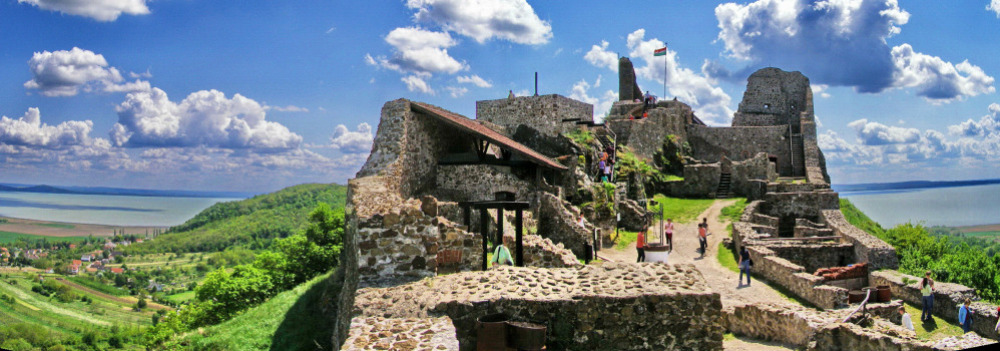
The western tip of Lake Balaton is rich in castle ruins. From the remains of the castles on Rezi, Tátika and Csobánc hills, you can enjoy a fantastic panorama of Lake Balaton and the buttes. In Szigliget and Sümeg, knights’ tournaments and jousting events are held several times a week. The Festetics Palace in Keszthely is not only one of the most beautiful and largest palaces in Hungary, but its exhibitions (carriages, hunting trophies, model railways, travels of the aristocrats, palm house) provide varied programmes for several days, should the weather take a turn for the worse.
Festetics Palace - Keszthely
Szigliget Castle - Szigliget
Sümeg Castle - Sümeg
Rezi Castle - Rezi Hill
Tátika Castle - Tátika Hill
Csobánc Castle - Csobánc Hill
Star Castle - Balatonszentgyörgy

Museums aren't the first thing you think of when you are on holiday. However, a good museum is a nice alternative when the weather turns unfavourable. Some museums are worth visiting even in good weather. The exhibitions at Festetics Palace are well worth a visit, and the permanent exhibition on the history of Lake Balaton at the Balaton Museum is surprisingly interesting for children and adults alike. In Keszthely, there are several smaller museums in the town centre, from the Erotic Wax-Works to the Snail Parliament. These small exhibitions can be visited during a walk around the town. For those who are more interested in nature, we recommend the House of Nature, in the neighbourhood of which you can also find the Imre Festetics Animal Park. And while cycling along the Balaton bike path, you can visit the Water Mill and Spice Garden in Gyenesdiás.
- Festetics Palace - Helikon Palace Museum permanent and temporary exhibitions - Keszthely
- Balaton Museum permanent and temporary exhibitions - Keszthely
- Balaton Museum escape room
- Museums in the Town Centre / Doll Museum, Snail Parliament, Erotic Wax-Works, Retro Toy Museum / - Keszthely
- House of Nature - Gyenesdiás
- Mill of Gyenesdiás, Baker's Museum, Herbarium and Spice Garden - Gyenesdiás
- Festetics Helikon Taverna wine and gastronomy exhibition space - Vonyarcvashegy
- Africa Museum - Balatonederics
- Star Castle - Balatonszentgyörgy

- Balaton Theatre - Keszthely
- Escape Room at the Balaton Museum - Keszthely
- Marina, scheduled boat trips and themed boat excursions - Keszthely
- Municipal Beach and Island Beach - Keszthely
- J&A Ceramics House - Gyenesdiás
- Darnay Cellar - Gyenesdiás
- Diás Play Beach - Gyenesdiás
- Paintball - Gyenesdiás
- Water Mill - Gyenesdiás
- St Michael’s Chapel - Vonyarcvashegy
- Lido Beach - Vonyarcvashegy
- Tavirózsa Adventure Park - Keszthely-Kertváros
- Zala Springs Golf Club - Zalacsány
- Rezi Dino and Adventure Park - Rezi
- Bobo Fun Park - Alsópáhok
- Peace Stupa - Zalaszántó

Keszthely | 6 kms from Hévíz
- Festetics Castle - Helikon Castle Museum temporary and permanent exhibitions
- Balaton Museum temporary and permanent exhibitions
- Museums of Keszthely
- Balaton Port, leisure boat trips, scheduled boat trips between cities
- City Beach and Island Bath
Gyenesdiás | 8 kms from Hévíz
- House of Nature visitor Center
- Festetics Imre Experience Centre
- Festetics Herb Garden & Herbarium at the Diás Water Mill
- J&A Ceramics House and Pottery
- Darnay Cellar
- Diási Beach
- Paintball
Vonyarcvashegy | 11 kms from Hévíz
Balatongyörök | 14 kms from Hévíz
Szigliget | 25 kms from Hévíz
Sümeg | 25 kms from Hévíz
Cave Lake of Tapolca | 30 kms from Hévíz
Badacsony - Badacsonytomaj | 30 kms from Hévíz
Tihany | 67 kms from Hévíz
Zalacsány - Zala Springs Golf Resort | 10 kms from Hévíz
2. Natural attractions
Last modification: 2019. July. 22. 11:55
Találati relevancia adatok
Tárolt adatok:
3. Valley of Herbs
Last modification: 2025. May. 27. 13:49
Herbs become teas and infused oils, fruits turn into dried snacks and pure juices — all crafted from natural ingredients using modern methods. Step into their “witch’s kitchen” and discover how nature’s gifts are transformed.
Találati relevancia adatok
Tárolt adatok:
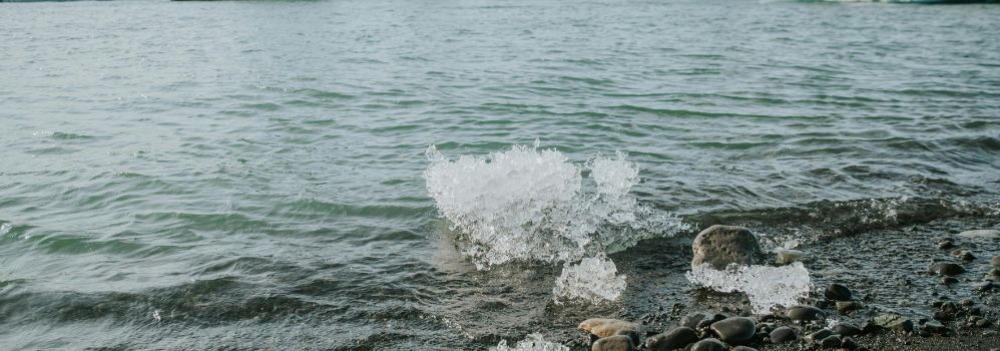
The Life-Giving Winds of the Ice Age: How Loess Shaped the Land
Did you know that Transdanubia’s rich, golden soils are actually a gift from the winds of the Ice Age? Loess isn’t just a dry geological term — it’s an ancient natural recipe that gave rise to some of the most fertile soils in the Carpathian Basin. Where vineyards grow today and birds nest in loess cliffs, strong winds once carried yellow dust across the landscape — for thousands of years. Learn how this unique sediment shaped the land and why loess is still essential for sustainable farming today.
What Is Loess and How Did It Form?
The term loess comes from the German word lose, meaning "loose." Loess is a fine-grained, yellowish sediment that was deposited during the Pleistocene epoch (2.58–0.01 million years ago), particularly during glacial periods. It formed in periglacial environments south of the great Scandinavian ice sheet — cold, dry landscapes with little or no vegetation.
The dust was carried by strong Ice Age winds from floodplains and barren steppes, and slowly accumulated over tens of thousands of years. Eventually, calcium carbonate cemented these layers into loess, which developed characteristic vertical fissures.
It’s important to note that the Pleistocene wasn't a single “Ice Age,” but a period that included alternating cold and warm phases — some even warmer than today.
Loess and the Landscape
Loess gave the Carpathian Basin — especially Transdanubia — its distinct terrain.
Steep loess cliffs (sometimes up to 10 meters high), caves that provide nesting sites for bee-eaters and sand martins, centuries-old sunken roads carved into hillsides, and exposed root systems are all part of the landscape’s geological legacy.
Together, they define the unique character of this region — shaped by time, wind, and stone.
Fertility and Water Retention
Loess-rich areas have produced some of the most fertile soils in the region. Many local producers farm on land that sits atop loess. This creates an excellent foundation for agriculture — not just because of the high humus content, but also because loess has outstanding water-holding capacity. Its vertical pores allow moisture to penetrate deeply and remain in the soil, even during dry periods.
A Modern Echo — Dust from the Sahara
Interestingly, the fine Saharan dust that now reaches Central Europe more frequently can be seen as a modern counterpart to loess-forming material. It’s a reminder that the powerful natural forces that shaped the land long ago are still at work today — just on a different scale.
4. Korosajt
Last modification: 2025. May. 27. 13:49
At Korosajt, cheeses are given the time they need to develop truly unique flavors. Destination: Nemesbük!
Találati relevancia adatok
Tárolt adatok:

The Life-Giving Winds of the Ice Age: How Loess Shaped the Land
Did you know that Transdanubia’s rich, golden soils are actually a gift from the winds of the Ice Age? Loess isn’t just a dry geological term — it’s an ancient natural recipe that gave rise to some of the most fertile soils in the Carpathian Basin. Where vineyards grow today and birds nest in loess cliffs, strong winds once carried yellow dust across the landscape — for thousands of years. Learn how this unique sediment shaped the land and why loess is still essential for sustainable farming today.
What Is Loess and How Did It Form?
The term loess comes from the German word lose, meaning "loose." Loess is a fine-grained, yellowish sediment that was deposited during the Pleistocene epoch (2.58–0.01 million years ago), particularly during glacial periods. It formed in periglacial environments south of the great Scandinavian ice sheet — cold, dry landscapes with little or no vegetation.
The dust was carried by strong Ice Age winds from floodplains and barren steppes, and slowly accumulated over tens of thousands of years. Eventually, calcium carbonate cemented these layers into loess, which developed characteristic vertical fissures.
It’s important to note that the Pleistocene wasn't a single “Ice Age,” but a period that included alternating cold and warm phases — some even warmer than today.
Loess and the Landscape
Loess gave the Carpathian Basin — especially Transdanubia — its distinct terrain.
Steep loess cliffs (sometimes up to 10 meters high), caves that provide nesting sites for bee-eaters and sand martins, centuries-old sunken roads carved into hillsides, and exposed root systems are all part of the landscape’s geological legacy.
Together, they define the unique character of this region — shaped by time, wind, and stone.
Fertility and Water Retention
Loess-rich areas have produced some of the most fertile soils in the region. Many local producers farm on land that sits atop loess. This creates an excellent foundation for agriculture — not just because of the high humus content, but also because loess has outstanding water-holding capacity. Its vertical pores allow moisture to penetrate deeply and remain in the soil, even during dry periods.
A Modern Echo — Dust from the Sahara
Interestingly, the fine Saharan dust that now reaches Central Europe more frequently can be seen as a modern counterpart to loess-forming material. It’s a reminder that the powerful natural forces that shaped the land long ago are still at work today — just on a different scale.
5. Margit Kreiner
Last modification: 2025. May. 27. 13:50
It’s not often you get to taste quail eggs — especially ones marinated in aromatic olive oil. Another must-try specialty is the wild garlic pesto, an irresistible highlight of the farm.
Találati relevancia adatok
Tárolt adatok:

The Life-Giving Winds of the Ice Age: How Loess Shaped the Land
Did you know that Transdanubia’s rich, golden soils are actually a gift from the winds of the Ice Age? Loess isn’t just a dry geological term — it’s an ancient natural recipe that gave rise to some of the most fertile soils in the Carpathian Basin. Where vineyards grow today and birds nest in loess cliffs, strong winds once carried yellow dust across the landscape — for thousands of years. Learn how this unique sediment shaped the land and why loess is still essential for sustainable farming today.
What Is Loess and How Did It Form?
The term loess comes from the German word lose, meaning "loose." Loess is a fine-grained, yellowish sediment that was deposited during the Pleistocene epoch (2.58–0.01 million years ago), particularly during glacial periods. It formed in periglacial environments south of the great Scandinavian ice sheet — cold, dry landscapes with little or no vegetation.
The dust was carried by strong Ice Age winds from floodplains and barren steppes, and slowly accumulated over tens of thousands of years. Eventually, calcium carbonate cemented these layers into loess, which developed characteristic vertical fissures.
It’s important to note that the Pleistocene wasn't a single “Ice Age,” but a period that included alternating cold and warm phases — some even warmer than today.
Loess and the Landscape
Loess gave the Carpathian Basin — especially Transdanubia — its distinct terrain.
Steep loess cliffs (sometimes up to 10 meters high), caves that provide nesting sites for bee-eaters and sand martins, centuries-old sunken roads carved into hillsides, and exposed root systems are all part of the landscape’s geological legacy.
Together, they define the unique character of this region — shaped by time, wind, and stone.
Fertility and Water Retention
Loess-rich areas have produced some of the most fertile soils in the region. Many local producers farm on land that sits atop loess. This creates an excellent foundation for agriculture — not just because of the high humus content, but also because loess has outstanding water-holding capacity. Its vertical pores allow moisture to penetrate deeply and remain in the soil, even during dry periods.
A Modern Echo — Dust from the Sahara
Interestingly, the fine Saharan dust that now reaches Central Europe more frequently can be seen as a modern counterpart to loess-forming material. It’s a reminder that the powerful natural forces that shaped the land long ago are still at work today — just on a different scale.
6. LídRind Porta
Last modification: 2025. May. 27. 13:50
At Lídrind Porta, every bite comes from home-raised cattle, crafted naturally and by hand, without additives.
Találati relevancia adatok
Tárolt adatok:

Did you know the Zala River once flowed into the Drava and only later “found” Lake Balaton?
The history of western Hungary’s water systems is not just a fascinating geological puzzle — it reads like an epic of Earth history: riverbeds shift, rivers “consume” one another, and even Lake Balaton doesn’t enter the scene until the final chapter. Discover how nature reshaped this landscape stroke by stroke — and how the Zala became Balaton’s most vital source of water.
The Quaternary Period and the Power of Landscape Formation
What sets the Quaternary Period (2.58 million years ago to the present) apart from earlier geological epochs is that the surface-shaping processes of this time — and the landforms they produced — continue to define our geographic environment today.
Pleistocene Changes: Riverbed Migrations and Terraces
One of the most pivotal surface processes during the Pleistocene (2.58 to 0.01 million years ago) was the migration of riverbeds and the formation of terraces and alluvial fans. These changes were closely tied to the slow retreat of the Pannonian Lake, which once filled much of the Carpathian Basin (see also: The Legacy of the Ancient Pannonian Lake).
The Ancient Danube Moves West
The early Danube initially flowed westward across what is now western Hungary, draining into the retreating Pannonian Lake. This westward course likely remained until the early Pleistocene.
A River’s Great Turning Point
The most dramatic hydrological change in the Carpathian Basin occurred between the Pliocene and Pleistocene: the formation of the Danube’s Visegrád Gorge (today’s Danube Bend), which diverted the river toward the center of the country and what is now the Pest Plain.
This shift profoundly affected all its former western tributaries — including the Zala.
The Story of the Zala: Migration and Capture
The river system of Central Transdanubia evolved in surprising ways, and the Zala’s journey is one of its most remarkable chapters. The Rába River already flowed northeastward toward the Little Hungarian Plain. The ancient Marcal, running northward, flowed into the Rába — and into it, in turn, flowed the ancient Zala.
But nature redrew the map — using the Zala as its brush. A now-vanished river flowing from north to south (its remnants visible today between Zalaszentgrót and Zalavár) cut into the landscape through a process called headward erosion — where rivers erode backward into the terrain, much like a hot knife slicing through butter. Eventually, it cut into the ancient Zala’s valley and “captured” the river, diverting it into its own course.
A New Path — and the Birth of Lake Balaton
From then on, the Zala made a sharp turn south at Türje and — with no Lake Balaton yet in existence — initially emptied into the Drava. Later, as the depression that would one day become Lake Balaton deepened, the Zala was gradually drawn toward it.
Lake Balaton, as a continuous body of water, is only about 5,000 years old — but for millions of years before, the Zala had already been on a winding journey that ultimately made it Balaton’s primary source of water, and the most life-giving river in the region today.
7. Hiking and touring
Last modification: 2024. August. 16. 13:40
Találati relevancia adatok
Tárolt adatok:
8. Kinesio Laboratory
Last modification: 2022. March. 01. 12:47
Találati relevancia adatok
Tárolt adatok:
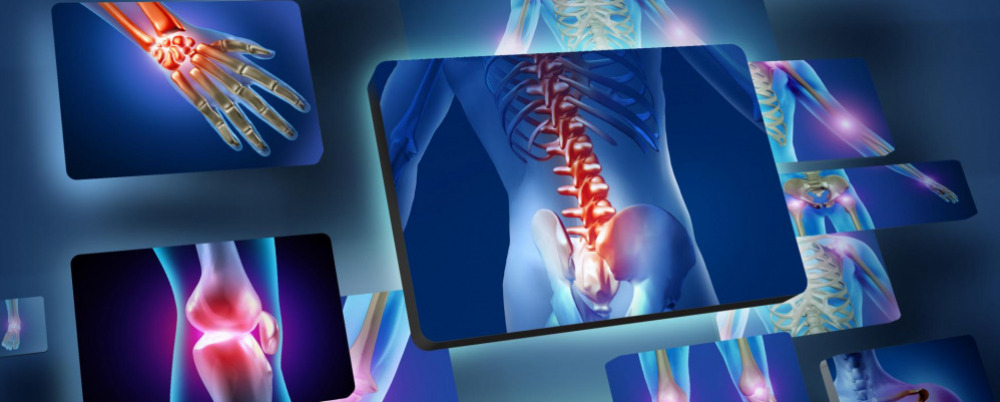

To whom are Kinesio-Lab services recommended?
Younger people, even children, as a preventive measure, adults, to identify or assess musculoskeletal and spinal problems, athletes, to get an accurate picture of the condition of joints and muscles that are under above-average strain, or of the whole body either to prevent sports injuries or to follow up on existing injuries.
Tests that are available at the Kinesio-Lab:
Functional examination of the gait (45 minutes)
Functional examination of the spine (30 minutes)
Body composition analysis (20 minutes)
Functional examination of the foot (30 minutes)
Kinesio - Lab packages

Where can you find it?
The Kinesio Movement Analysis Lab is located on the second floor of the Festetics Bathhouse.
It is a facility of Hévíz Spa and St Andrew’s Hospital for Rheumatic Diseases. However, it is not located in the hospital. The Kinesio Lab can be accessed through the main entrance of the Lake Baths in Ady Endre Street. To make an appointment for a test in the laboratory, you don't need to have a doctor's referral or purchase a ticket to the Lake Baths. However, it is essential to book an appointment in advance. At the same time, you can also discuss which tests you would like to take.
Appointment
During opening hours in person on the spot: Festetics Bathhouse, Therapy Department
Via telephone: + 36 83 501-700 / extension 530 or 528 (during opening hours)
Via e-mail: mozgaslabor@spaheviz.hu

From 3 November 2025, Lake Hévíz can be accessed only via the entrance on Ady Street through the Festetics Day Spa.
Bathing is allowed only outdoors.
• Wellness area (the admission ticket includes the wellness usage fee)
• Vital Bar and Medio Buffet
• Covered rest areas in the section between Festetics Bathhouse and Vital Bar / Medio Buffet (“C” and “D” buildings)
• Outdoor shoreline section between the main entrance and the Festetics Day Spa (seasonally)
A limit is introduced on the accessible territories of the Lake Bath, which determines the simultaneous capacity of the facilities. For up‑to‑date information, please contact the information desk:
E‑mail: spaheviz@spaheviz.hu
Mobile: +36 30 959 1002
• Deák Square entrance
• Central Bathhouse (“A” building and “B” terrace)
• Northern water surface (between the “A” building and the Summer building)
Detailed information about the closure of the central Bathhouse (“A” building and “B” terrace) is available on www.spaheviz.hu.
Due to technical preparation work, phased closures on the water surface and shoreline are expected.
• Patient lift: at the outdoor seating pool (Vital Bar terrace, “C” Building )
Our staff provide assistance with the use of the patient lift.

Yearly opening hours |
|||
| Opening | End of bathing and wellness time | Closing | |
| 2025.10.06. - 2025.10.25. | 9:00 | 17:00 | 17:30 |
| 2025.10.26. - 2026.02.08. | 8:30 | 16:00 | 16:30 |
| 2026.02.09. - 2026.03.29. | 9:00 | 17:00 | 17:30 |
Closing time on 24.12.2025 is at 14:00; on 31.12.2025 at 16:00. Opening time is at 11:00 on 01.01.2026.
Hévíz Lake Bath and Festetics Bathhouse price list
Valid from 03.11.2025 to 31.03.2026
2-hour admission + WELLNESS ACCESS |
|
| Valid only on the day of purchase – entitles to a one-time entry. Includes the use of the wellness area. An additional charge will be levied if the allotted time limit is exceeded. Additional time extension cannot be purchased after the time limit has expired. Admission for children under the age of 6 is free of charge. | |
| 2-hour admission | 3 000 HUF |
| 2-hour admission seniors - Available for individuals over the age of 60. Can be purchased upon prior presentation of a valid photo ID. | 2 500 HUF |
| 2-hour admission students - Available for individuals over the age of 14. Can be purchased upon prior presentation of a valid student card. | 2 500 HUF |
| 2-hour admission children - Available for children aged 6 to 14. | 1 500 HUF |
| 2-hour admission groups - Discounted 2-hour admission - available for groups of 20 people or more, if payed in one sum. | 2500 HUF/Person |
Memberships + WELLNESS ACCESS |
|
| 10-hour membership - Valid for 20 days (can be used on the day of purchase + 19 calendar days) - the pass grants entry twice per day. Includes the use of the wellness area. The deposit is refundable within 5 calendar days after the expiration date. | 13 000 Ft + 2 000 Ft deposit |
| 20-hour membership - Valid for 30 days (can be used on the day of purchase + 29 calendar days) - the pass grants entry twice per day. Includes the use of the wellness area. The deposit is refundable within 5 calendar days after the expiration date. | 23 000 Ft + 2 000 Ft deposit |
Other rates |
|
| + 1 hour extension - Usable for extending the 2-hour admission. Valid once per admission. | 1 500 HUF |
| Additional charge - For exceeding the allotted time limit, payable for every 30 minutes. | 1 000 HUF |
| Cloakroom - Operates seasonally - the fee applies per coat/package. | 300 HUF |
| Safety deposit box - Usage is free of charge. |
2000 HUF deposit |
| Swimring rental - Daily fee. | 700 HUF + 2 000 HUF deposit |
| Sauna towel | 500 HUF |
Online purchased tickets and gift vouchers can be redeemed at the information desk located in the Festetics Day Spa.
Gift vouchers purchased from 1 October 2025, can be redeemed between 1 April 2026 and 31 October 2026.
General information
- The depth of the lake is 2 to 38 m.
• We reserve the right to change prices and opening hours.
• The price of purchased tickets can not be refunded.
• Accepted means of payment: cash (HUF), bank card or SZÉP card.
• By purchasing admission to the lake area, visitors implicitly agree to adhere to the house rules.
• Admission for children under the age of 6 is free.
• Swimring rental is possible only with the purchase of a rental ticket and the payment of a deposit. The Bath refunds the deposit only, if the rented equipment is returned until the end of bathing time, on the day of rental. Payment is possible only in cash (in Hungarian Forint).
• The admission tickets include the use of the wellness area. Wellness and sauna services are available to individuals over 12 years of age only. For reasons of hygiene, one sauna towel is provided for each wellness admission.
• For more information, please contact the information counter at the Festetics Day Spa
9. Lake Hévíz
Last modification: 2025. February. 17. 14:58
Találati relevancia adatok
Tárolt adatok:

Flavius Theodosius, the emperor who was a sickly child, or the best-known legend of the origin of Lake Hévíz
According to the ancient legend about the birth of the lake and its healing powers, Flavius, a Roman boy, was brought up by a Christian nurse here in Pannonia. The boy was weak and of poor health but his father was a great military leader so the nurse prayed to Virgin Mary to help him. The Holy Virgin, hearing her prayer, caused a spring to gush forth, in the healing water of which the child was bathed every day. The hot water of the spring and the steaming mud made the child's body grow stronger and stronger. Later, the boy became the Emperor of Eastern Rome, Flavius Theodosius, who made Christianity the state religion of his empire in 391. Since then, the water of the spring has been feeding Lake Hévíz and has brought healing to many.
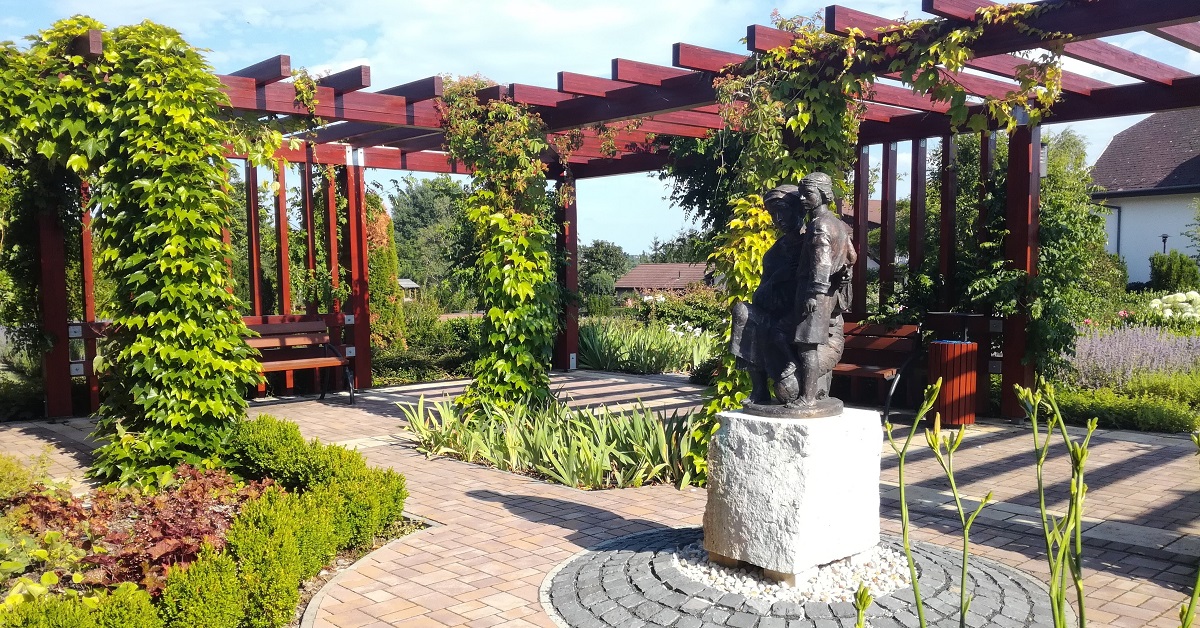
When it comes to Hévíz and the Romans, there is no doubt that there were several places in the settlement and the surrounding area where people lived in Roman times. Local excavations show that there was a significant settlement in the period of the Roman empire in the present-day Egregy district. Several finds of the Villa Rustica - or villa farm - show that the settlement was inhabited from the 1st century until the 5th century. Roman artefacts were found not only in Egregy but also in other parts of Hévíz: Roman coins, earthenware, and an altar stone of Jupiter were found in the bed of Lake Hévíz.

The formation of Lake Hévíz in reality…
Lake Hévíz was born at the same time as Lake Balaton 20-22 thousand years ago. The origin of Lake Hévíz dates back to the time when the basalt mountains around Lake Balaton and Lake Balaton itself were born. At the end of the Pannonian period, volcanoes broke up the landscape of the Transdanubian region. The first signs of postvolcanic activity were the eruption of hot springs, such as the original Hévíz thermal spring. Archaeological excavations show that people lived here as early as the end of the Stone Age. In addition, many legends are dating back to different periods about the healing properties of the water here. According to Roman remains and finds, Hévíz was already a settlement 2,000 years ago, but even more surprisingly, water samples taken upon the discovery of the spring cave suggest that the cold water from the spring is 8,000 years old, while the hot medicinal water is 12,000 years old.

From 3 November 2025, Lake Hévíz can be accessed only via the entrance on Ady Street through the Festetics Day Spa.
Bathing is allowed only outdoors.
• Wellness area (the admission ticket includes the wellness usage fee)
• Vital Bar and Medio Buffet
• Covered rest areas in the section between Festetics Bathhouse and Vital Bar / Medio Buffet (“C” and “D” buildings)
• Outdoor shoreline section between the main entrance and the Festetics Day Spa (seasonally)
A limit is introduced on the accessible territories of the Lake Bath, which determines the simultaneous capacity of the facilities. For up‑to‑date information, please contact the information desk:
E‑mail: spaheviz@spaheviz.hu
Mobile: +36 30 959 1002
• Deák Square entrance
• Central Bathhouse (“A” building and “B” terrace)
• Northern water surface (between the “A” building and the Summer building)
Detailed information about the closure of the central Bathhouse (“A” building and “B” terrace) is available on www.spaheviz.hu.
Due to technical preparation work, phased closures on the water surface and shoreline are expected.
• Patient lift: at the outdoor seating pool (Vital Bar terrace, “C” Building )
Our staff provide assistance with the use of the patient lift.

Yearly opening hours |
|||
| Opening | End of bathing and wellness time | Closing | |
| 2025.10.06. - 2025.10.25. | 9:00 | 17:00 | 17:30 |
| 2025.10.26. - 2026.02.08. | 8:30 | 16:00 | 16:30 |
| 2026.02.09. - 2026.03.29. | 9:00 | 17:00 | 17:30 |
Closing time on 24.12.2025 is at 14:00; on 31.12.2025 at 16:00. Opening time is at 11:00 on 01.01.2026.
Hévíz Lake Bath and Festetics Bathhouse price list
Valid from 03.11.2025 to 31.03.2026
2-hour admission + WELLNESS ACCESS |
|
| Valid only on the day of purchase – entitles to a one-time entry. Includes the use of the wellness area. An additional charge will be levied if the allotted time limit is exceeded. Additional time extension cannot be purchased after the time limit has expired. Admission for children under the age of 6 is free of charge. | |
| 2-hour admission | 3 000 HUF |
| 2-hour admission seniors - Available for individuals over the age of 60. Can be purchased upon prior presentation of a valid photo ID. | 2 500 HUF |
| 2-hour admission students - Available for individuals over the age of 14. Can be purchased upon prior presentation of a valid student card. | 2 500 HUF |
| 2-hour admission children - Available for children aged 6 to 14. | 1 500 HUF |
| 2-hour admission groups - Discounted 2-hour admission - available for groups of 20 people or more, if payed in one sum. | 2500 HUF/Person |
Memberships + WELLNESS ACCESS |
|
| 10-hour membership - Valid for 20 days (can be used on the day of purchase + 19 calendar days) - the pass grants entry twice per day. Includes the use of the wellness area. The deposit is refundable within 5 calendar days after the expiration date. | 13 000 Ft + 2 000 Ft deposit |
| 20-hour membership - Valid for 30 days (can be used on the day of purchase + 29 calendar days) - the pass grants entry twice per day. Includes the use of the wellness area. The deposit is refundable within 5 calendar days after the expiration date. | 23 000 Ft + 2 000 Ft deposit |
Other rates |
|
| + 1 hour extension - Usable for extending the 2-hour admission. Valid once per admission. | 1 500 HUF |
| Additional charge - For exceeding the allotted time limit, payable for every 30 minutes. | 1 000 HUF |
| Cloakroom - Operates seasonally - the fee applies per coat/package. | 300 HUF |
| Safety deposit box - Usage is free of charge. |
2000 HUF deposit |
| Swimring rental - Daily fee. | 700 HUF + 2 000 HUF deposit |
| Sauna towel | 500 HUF |
Online purchased tickets and gift vouchers can be redeemed at the information desk located in the Festetics Day Spa.
Gift vouchers purchased from 1 October 2025, can be redeemed between 1 April 2026 and 31 October 2026.
General information
- The depth of the lake is 2 to 38 m.
• We reserve the right to change prices and opening hours.
• The price of purchased tickets can not be refunded.
• Accepted means of payment: cash (HUF), bank card or SZÉP card.
• By purchasing admission to the lake area, visitors implicitly agree to adhere to the house rules.
• Admission for children under the age of 6 is free.
• Swimring rental is possible only with the purchase of a rental ticket and the payment of a deposit. The Bath refunds the deposit only, if the rented equipment is returned until the end of bathing time, on the day of rental. Payment is possible only in cash (in Hungarian Forint).
• The admission tickets include the use of the wellness area. Wellness and sauna services are available to individuals over 12 years of age only. For reasons of hygiene, one sauna towel is provided for each wellness admission.
• For more information, please contact the information counter at the Festetics Day Spa
10. Medicinal mud
Last modification: 2019. June. 13. 15:02
Találati relevancia adatok
Tárolt adatok:
11. Drinking cure
Last modification: 2019. June. 13. 14:43
Találati relevancia adatok
Tárolt adatok:
12. Hydrotherapy
Last modification: 2019. June. 13. 14:10
Találati relevancia adatok
Tárolt adatok:
13. Recipe tips from Hévíz
Last modification: 2019. June. 12. 14:13
Találati relevancia adatok
Tárolt adatok:
14. Churches
Last modification: 2019. July. 22. 13:21
Találati relevancia adatok
Tárolt adatok:
15. Physiotherapeutic treatments
Last modification: 2019. July. 01. 08:00
Találati relevancia adatok
Tárolt adatok:
16. Massage
Last modification: 2019. June. 13. 14:39
Találati relevancia adatok
Tárolt adatok:
17. Getting around Hévíz in a wheelchair
Last modification: 2019. October. 17. 10:56
In the town, everyone strives to make it easier for guests with limited mobility to enjoy their holiday in Hévíz and to be able to use services conveniently.
Találati relevancia adatok
Tárolt adatok:
18. Man-made attractions
Last modification: 2019. July. 22. 14:30
Találati relevancia adatok
Tárolt adatok:
19. Sights around Hévíz
Last modification: 2020. April. 22. 11:47
Találati relevancia adatok
Tárolt adatok:
20. Composition of the water
Last modification: 2019. June. 12. 13:20
